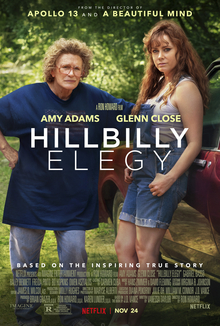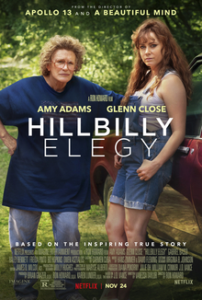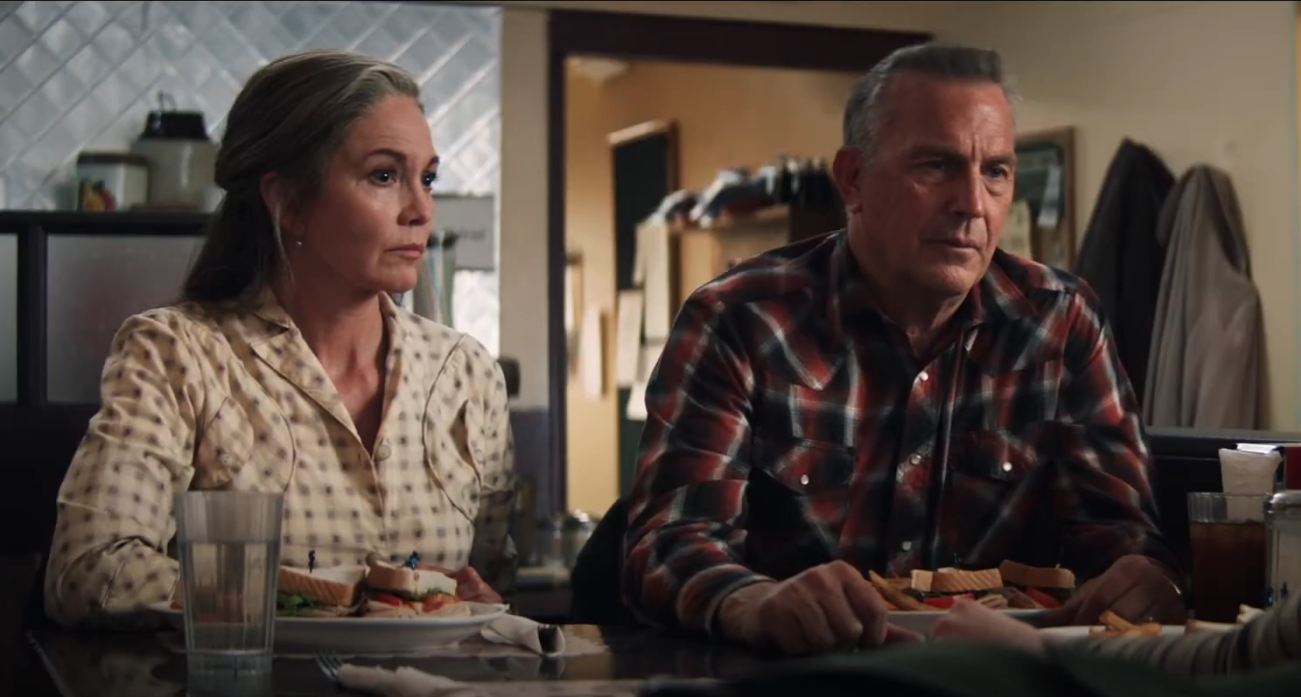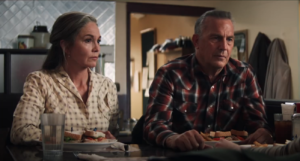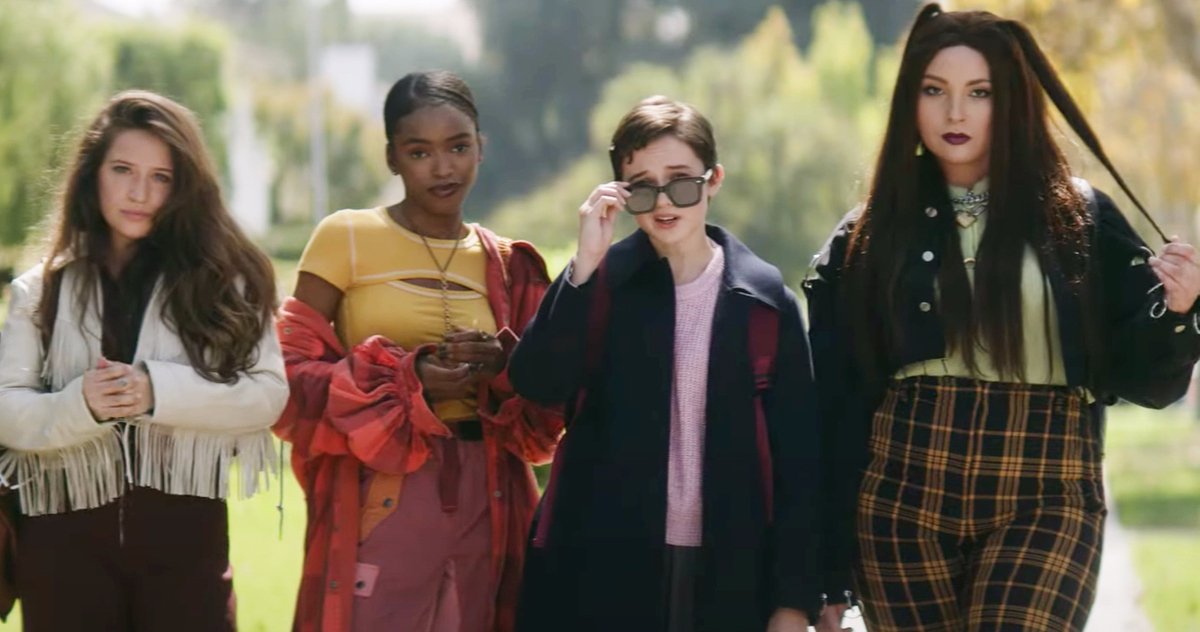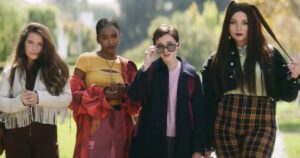Freaky
Posted on November 12, 2020 at 5:51 pm
B| Lowest Recommended Age: | Mature High Schooler |
| MPAA Rating: | Rated R |
| Profanity: | Strong language |
| Alcohol/ Drugs: | Teen drinking, mother abuses alcohol |
| Violence/ Scariness: | Constant very intense and graphic horror violence, many grisly murders, disturbing images |
| Diversity Issues: | Diverse characters |
| Date Released to Theaters: | November 13, 2020 |
| Date Released to DVD: | February 8, 2021 |
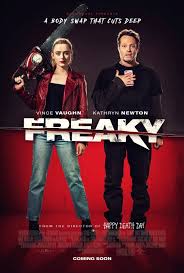
If you read my reviews, you know I usually skip the horror movies. So, forgive me if my thoughts on “Freaky” reflect my ignorance. But I was intrigued by the premise of a large male serial killer switching bodies with a blonde teenage girl. And I like the cast, so I watched it, and it’s pretty fun.
But I don’t know enough about horror films to tell you whether the pedestrian set-up and stock characters are just a shortcut because the filmmakers don’t care — and know the audience doesn’t care — and everyone just wants to get to the good stuff, or because they are making some sort of meta-commentary on the whole idea and genre of teen slasher movies. Maybe both. Probably it does not matter. So, let’s just get to the good stuff.
Certainly, the movie wastes no time in getting there. It begins, as all good self-aware teen slasher movies should, with teens in a luxurious but still somehow creepy setting, outside a mansion, trading stories about a legendary serial killer known as the Blissfield Butcher. Some say he’s just a legend. Some say he re-appears every year. We have just enough time to see how arrogant and obnoxious these overprivileged kids are (that’s how we feel better about their horrific murders, right?) before the Blissfield Butcher (Vince Vaughn) arrives, killing them in various creative but grisly and very bloody ways.
Then we meet Milly (Kathryn Newton of “Big Little Lies”), who lives with her recently widowed and therefore vulnerable and clingy mother and her older sister, a police officer. Milly is in high school. She has two devoted best friends, Josh (Misha Osherovich) and Nyla Celeste O’Connor. But she also has bullies, including tiny but fierce mean girl Ryler (Melissa Collazo), some guys, and her shop class teacher (Alan Ruck, yes, Cameron in “Ferris Bueller’s Day Off”).
After the homecoming football game (which does not get cancelled even though a group of students have all been horribly murdered, but okay), Milly is left alone waiting for her mother to pick her up. The Butcher attacks her with a mysterious knife he stole from the mansion. And it turns out to have magical powers or a curse or whatever. When the Butcher stabs Milly, their bodies switch. And, as they will later find out, if they don’t switch back by midnight the next day, they’ll be stuck that way.
This is where everyone starts to have some fun. Vaughn is a hoot trying to persuade Nyla and Josh that it is really Milly inside that 6’5″ middle-aged male body. And Newton has a blast with her new bad self inside the body of a high school girl. Milly is not able to muster the courage to stand up to her shop class teacher or the bullies or to talk to her crush, Booker (Uriah Shelton), but Milly on the outside, Butcher on the inside usually does. Let’s just say that there’s a reason it’s the SHOP class teacher who has been so mean to her.
And of course it all ends up at a big teen party.
In between all of the murders and mayhem, there is room for some sly humor and some genuine warmth as Milly-in-the-Butcher’s-Body hides out in a discount store dressing room and talks to her mom on the other side of the door, and some romance as she and Booker have a quiet, very sweet conversation in a car. There’s a vicarious thrill at seeing the Butcher-in-Milly’s-body stand up (even if it is in a murderous manner) to the people who treated Milly badly.
I’m still not a horror fan, but I enjoyed this one, and if you are a horror fan I’m pretty sure you will, too.
Parents should know this is a full-on horror movie with many disturbing images and grisly murders. Characters use strong language and there are references to sex (some crude) and to alcohol abuse.
Family discussion: What did Milly learn about her mother in the dressing room? How would you convince someone that you were you if you suddenly looked completely different?
If you like this, try: “Jennifer’s Body” and “Shawn of the Dead”

